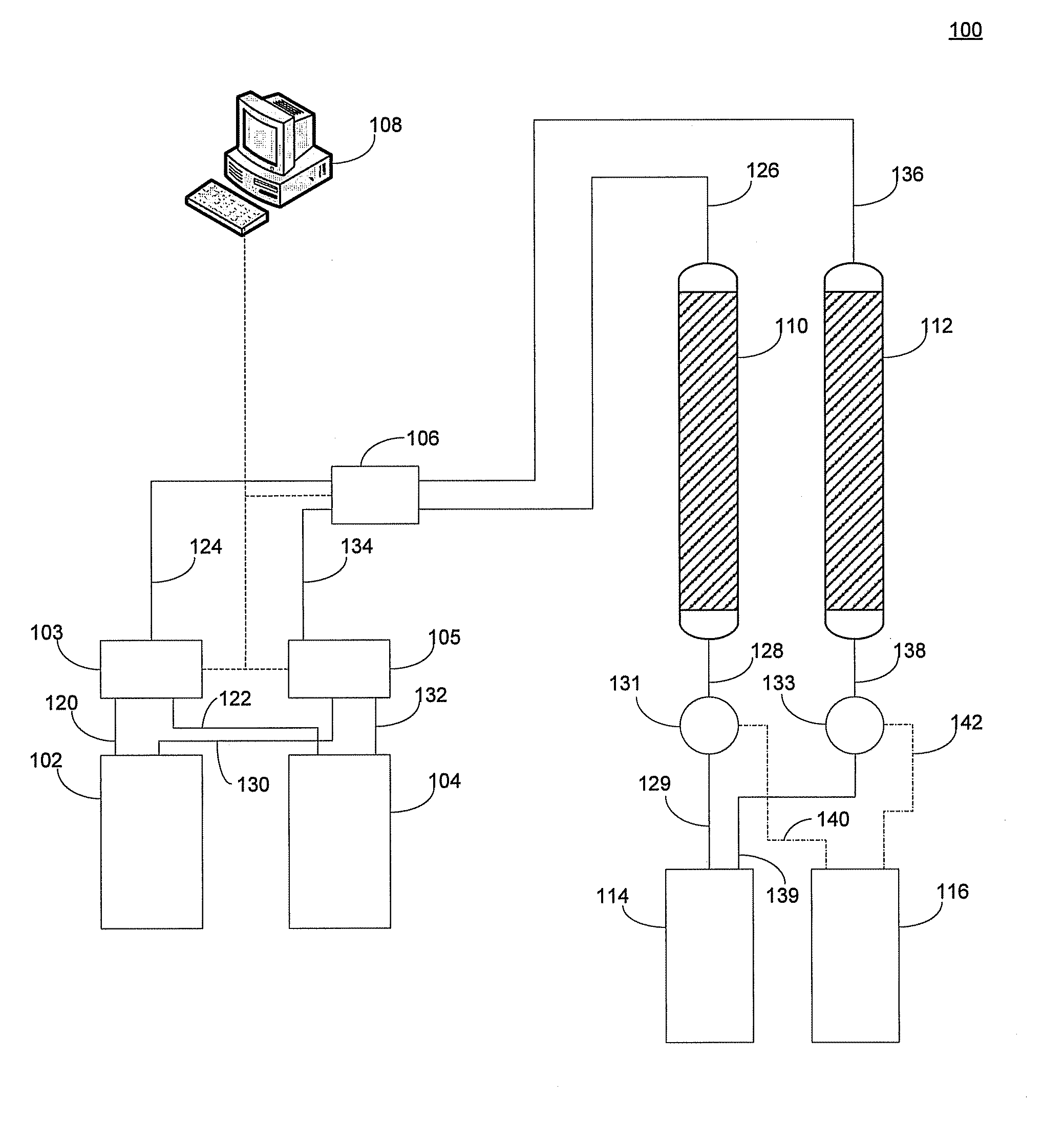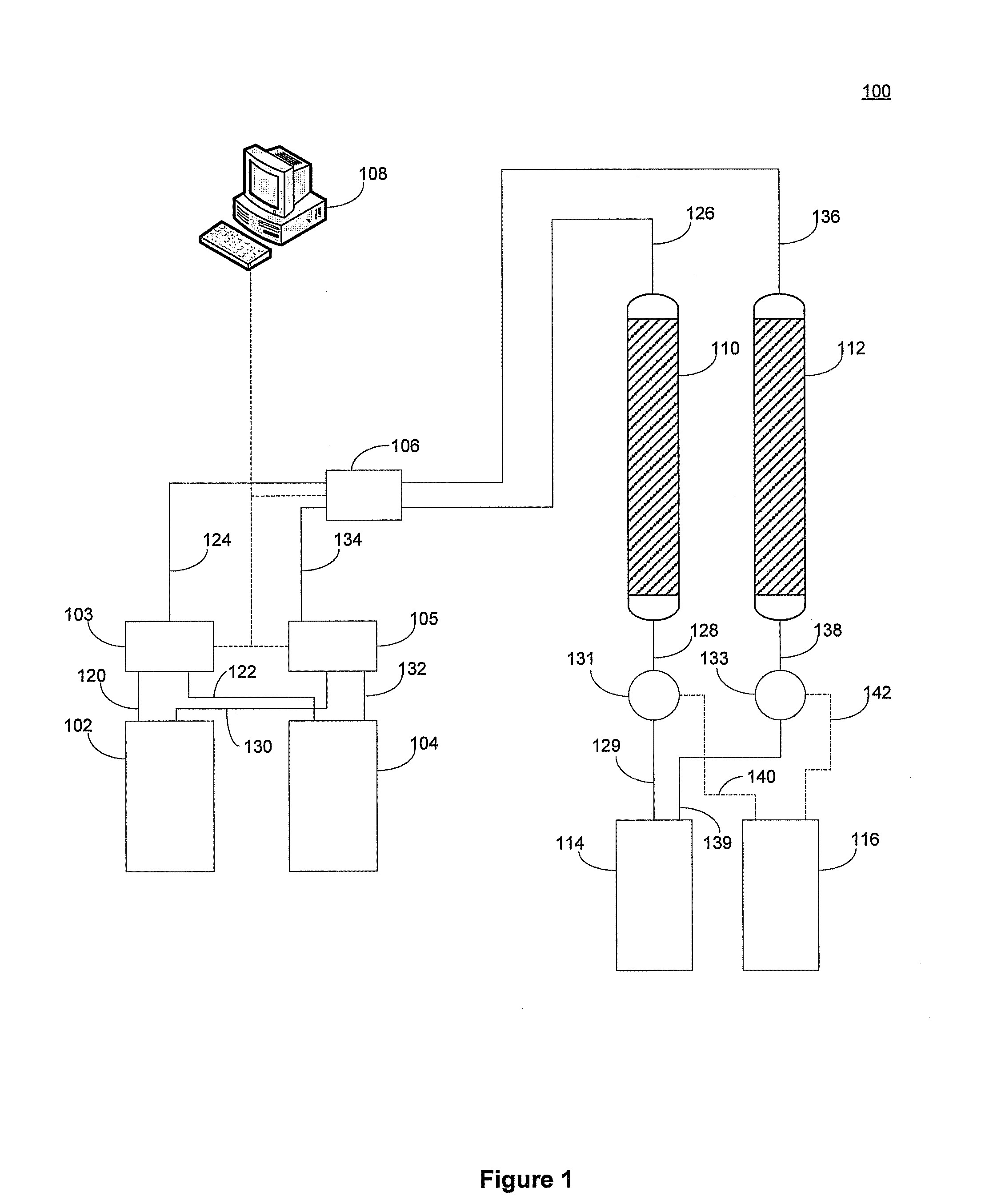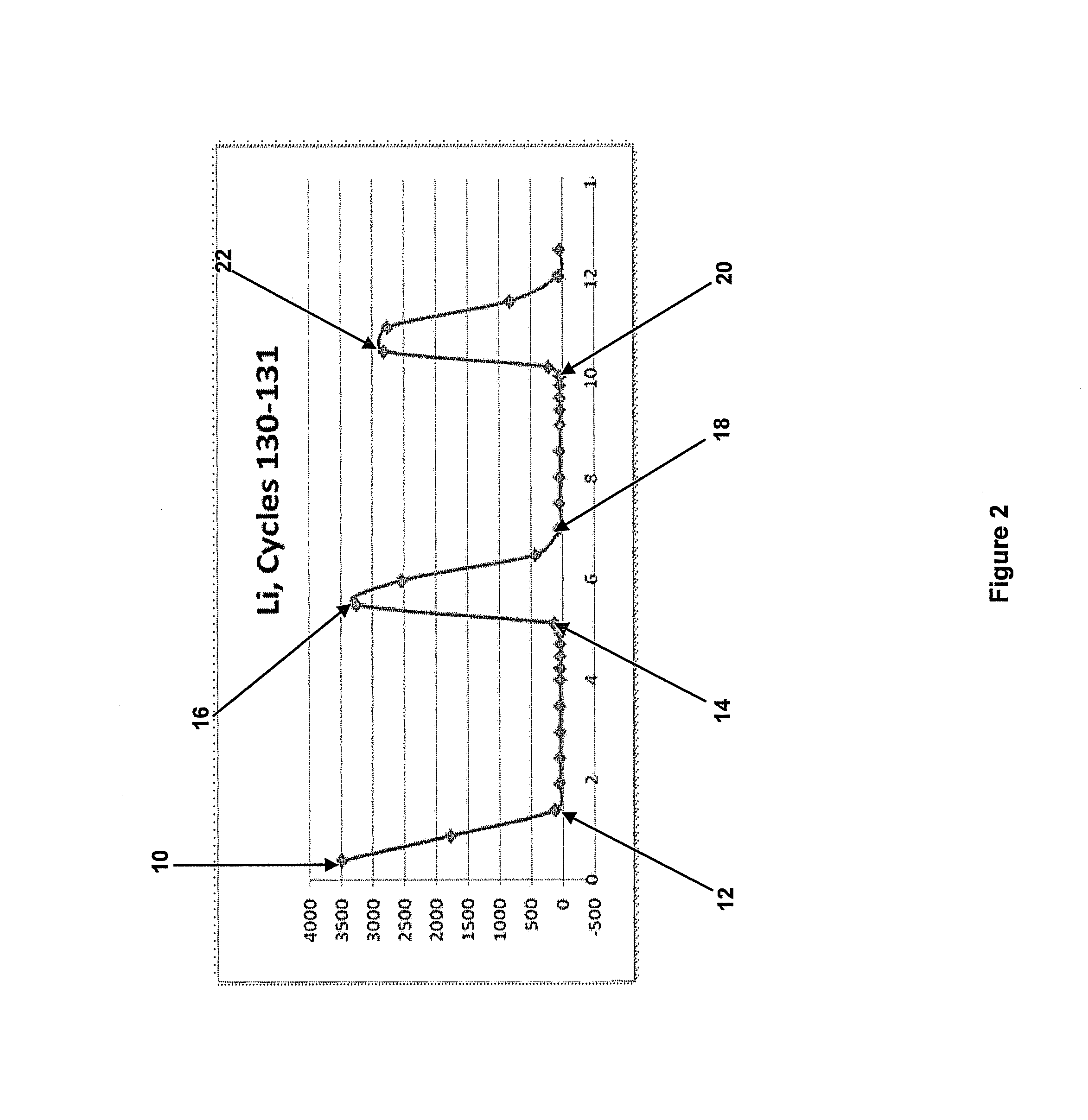Sorbent for lithium extraction
a lithium and sorbent technology, applied in the direction of lithium compounds, separation processes, sludge water treatment from quaries, etc., can solve the problems of shortened lifetime, increased recovery costs, and methods that employ packed columns for recovery, and achieves high ionic strength
- Summary
- Abstract
- Description
- Claims
- Application Information
AI Technical Summary
Benefits of technology
Problems solved by technology
Method used
Image
Examples
example 1
[0052]In one embodiment, the lithium aluminate can be prepared as follows. To an appropriately sized metal or plastic container capable of being heated to a temperature of about 100° C. is added and mixed approximately 1 kg of unfractionated Alcoa aluminum trihydrate (Al(OH)3) and LiOH.H2O, in a ratio of approximately 2 moles of aluminum to approximately 1.05 moles of lithium, and about 0.8 kg of deionized water. The mixture is heated in an oven at a temperature of about 60° C. until the hydroxide concentration, as determined by titration, indicates that at least about 93% of the hydroxide present has reacted. The mixture is removed from heat, cooled to room temperature and approximately 0.8 kg of water is added to the mixture. The resulting mixture is then neutralized using hydrochloric acid over a period of at least 2 hours to achieve a pH of between about 6.5 and 7.5. The resulting solid is filtered and dried.
example 2
[0053]Preparation of Particulate PVDF / LAI Matrix. Approximately 1.47 g of polyvinylidene fluoride copolymer (Kynarflex 2821) and approximately 27.56 g of the LAI powder (as prepared in Example 2, above) were placed in a plastic jar and mixed using a mechanical stirrer, at increasingly higher speeds, 1000-5000 rpm, over a period of about five minutes. The resulting mixed matrix powder was placed in a frame having two Teflon lined metal plates. The powder mixture in the press frame was placed in a hydraulic press and subjected to approximately 3500 psi pressure for approximately three minutes, released, subjected to approximately 4000 psi of pressure for approximately, released, subjected to approximately 5000 psi of pressure and a temperature of about 360° C. for approximately 3 minutes, released, subjected to approximately 10,000 psi of pressure and a temperature of about 360° C. for approximately 3 minutes, and released. The assembly was then subjected to approximately 3500 psi of ...
example 3
[0054]Approximately 70 g of a 5% solution of polyvinyl alcohol (“PVA”; Mowiol 56-98) was added to approximately 1.4 g of a 10% glutaraldehyde solution and mixed for approximately 2 minutes. To the polyvinyl alcohol and glutaraldehyde solution was added approximately 70 g of a LAI prepared according to Example 2 having an average particle diameter of less about 180 μm and stirred with a Cowles blade at about 600 rpm for about 10-15 minutes, until the mixture thickens, yet is still flowable. To the mixture is added approximately 20 g of the same LAI to form a paste. Hydrochloric acid is added dropwise until the pH of the mixture is less than 3. Approximately 10 g of additional LAI is added without mixing to the acidified paste to form a stiff mixture. The mixture was dried at a temperature of about 85° C. in an open atmosphere.
[0055]The resulting mixture was ground until the matrix consisted of particles having a diameter of less than about 600 μm. The resulting powder was sieved to r...
PUM
| Property | Measurement | Unit |
|---|---|---|
| Temperature | aaaaa | aaaaa |
| Fraction | aaaaa | aaaaa |
| Percent by mass | aaaaa | aaaaa |
Abstract
Description
Claims
Application Information
 Login to View More
Login to View More - R&D
- Intellectual Property
- Life Sciences
- Materials
- Tech Scout
- Unparalleled Data Quality
- Higher Quality Content
- 60% Fewer Hallucinations
Browse by: Latest US Patents, China's latest patents, Technical Efficacy Thesaurus, Application Domain, Technology Topic, Popular Technical Reports.
© 2025 PatSnap. All rights reserved.Legal|Privacy policy|Modern Slavery Act Transparency Statement|Sitemap|About US| Contact US: help@patsnap.com



